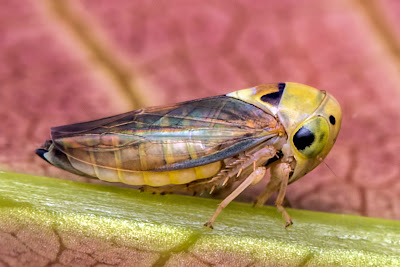In past posts relating to the Foraminifera, I've made reference to the changes in classification undergone by this group over the years. Forams are unusual among unicellular organisms in producing a hard, often complex test that means they have both left an extensive fossil record and provided a number of characters on which to base a classification. However, there has been much disagreement over the relative attention due to particular features of the test. The classification used for forams in the Treatise on Invertebrate Paleontology by Loeblich & Tappan (1964), one of most influential sources in recent decades, made its primary divisions on the basis of the structure and chemistry of the test itself. Forams that produce a test by gluing together (agglutinating) sand particles and other foreign objects were treated as fundamentally distinct from those that secreted calcareous tests. Because the foram cell itself is amoeboid, there was an underlying assumption that the test architecture was too mutable to indicate anything more than low-level relationships.
However, there were some prominent inconsistencies with this assumption (Mikhalevich 2013). One is that the division between agglutinated and calcareous tests is not always perfect. Agglutinated forams might not secrete the bulk of the test themselves but they do secrete the cement used to hold the sand grains together, and there is a definite spectrum in the proportion of sand to cement used by a given foram. In some agglutinated forms, a distinct calcareous layer may underlie the agglutinated section of the test, and it is easy to envision how a progressive reduction in the proportion of agglutinated material could lead to the evolution of an entirely secreted test. This was not in itself fatal to the earlier system as it had generally been assumed that agglutinated forams were likely to represent a paraphyletic group. More problematic was the common appearance of foram species that were extremely similar in test architecture with the only really significant difference being that one was agglutinated and the other calcareous. This lead some authors to argue that whereas a small number of such cases might be accepted as the result of convergence, the abundance of such cases suggested that changes in test composition were more common than previously recognised. Molecular studies of forams are still in their infancy but have offered some support for the significance of test architecture, such as the division between globular and tubular forams (Pawlowski et al. 2013) that I referred to in an earlier post.
One effect of this change in focus is that the Mikhalevich (2013) classification divides the agglutinated forams between a number of groups that are not recognised in alternative systems. One such group is the Nouriida, known from the Cretaceous to the present day. Mikhalevich included the Nouriida in a larger group called the Hormosinana; at least one hormosinanan was placed by Pawlowski et al. (2013) at the base of the globular foram lineage. In contrast, Loeblich & Tappan (1964) included most of the nouriidans in the family Ataxophragmiidae, other members of which belong to the tubular forams. Nouriida and other Hormosinana are united by having the aperture of the test in a terminal position; in some nouriidans, it may be raised on a short neck. Nouriida differ from other hormosinanans in the arrangement of chambers in the test. In early stages they tend to be more or less trochospiral; with maturity, the number of chambers to a whorl decreases and the test may become biserial or uniserial. The two subfamilies recognised within the Nouriida by Mikhalevich differ in the internal structure of their chambers: Nourioidea have internally simple chambers but Liebuselloidea have the lumen of the chambers complexly subdivided.
I haven't found much about their ecological role; at least one modern species, Nouria polymorphinoides, seems to be not uncommon in shallower continental shelf waters worldwide. My general impression (just confirmed by asking a colleague who actually works on forams) is that agglutinated forams receive far less attention than calcareous ones. A big part of this is simply that they're harder to find: it takes a lot of practice to be able to pick out an actual agglutinated foram test from any other conglomeration of sand, and if they break apart during sample prep (which they often do) then there is little sign they were ever there to begin with.
REFERENCES
Loeblich, A. R., Jr, & H. Tappan. 1964. Treatise on Invertebrate Paleontology pt C. Protista 2. Sarcodina: chiefly "thecamoebians" and Foraminiferida vol. 1. The Geological Society of America, and The University of Kansas Press.
Mikhalevich, V. I. 2013. New insight into the systematics and evolution of the Foraminifera. Micropaleontology 59 (6): 493–527.
Pawlowski, J., M. Holzmann & J. Tyszka. 2013. New supraordinal classification of Foraminifera: molecules meet morphology. Marine Micropalaeontology 100: 1–10.






























